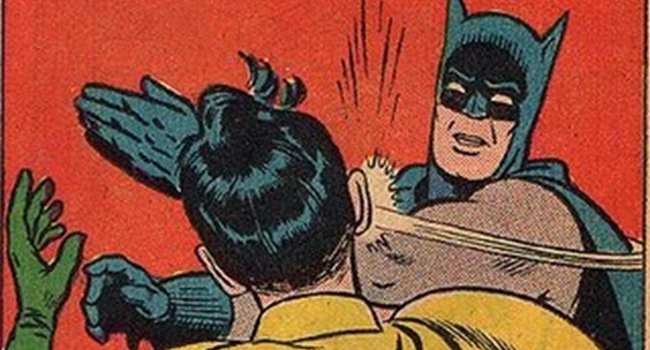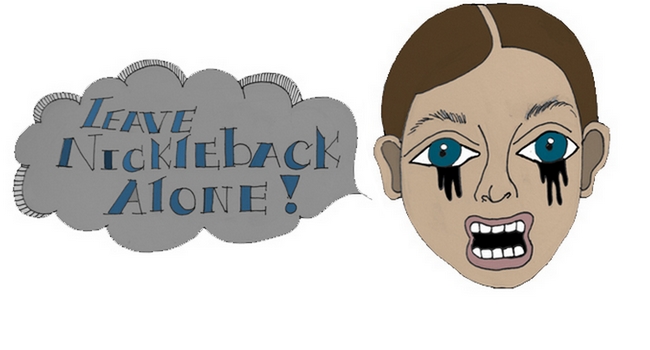We should all be as lucky as David Bowie: at age 65, he’s cooler than ever. Sure, he may not be able to don the tight trousers that corrupted so many young viewers in 1986’s Labyrinth, but as the pop acts around us become wilder and more colorful, it’s hard to not think that we’re living in a world predicted by the bright, sexy, glimmering glam that Bowie mastered in the early-to-mid ’70s.
But if you’re looking for the true successor of Bowie, look to the weird guy that’s been quietly redefining indie rock for a decade and a half: Athens, Georgia’s of Montreal, and their mercurial frontman Kevin Barnes.
Easy comparisons liken Barnes to Bowie circa Ziggy Stardust or Aladdin Sane, and it’s not hard to see why—there’s the glitter, there’s the omni-sexual ravenousness (Bowie went down on Mick Ronson’s guitar, and Barnes drops his pants in Vegas) and then there’s the increasingly wild stage props and costumes.
But for a truer comparison between the two, consider Bowie’s most restrained persona: the immaculate and icy Thin White Duke of 1976’s Station to Station, an album whose stylistic influence continued into the acclaimed “Berlin Trilogy,” where Bowie could be seen ditching his defining glam gimmicks for sleek coolness, both in his emotionless stage persona and experimental electronic sounds. Compare this character to Barnes’ wild alter-ego Georgie Fruit, under whose tutelage of Montreal reached new peaks of glitter and sleaze-funk, starting with 2007’s Hissing Fauna, Are You The Destroyer?
Just like that record, Station to Station was recorded at a key crisis point for Bowie. In Barnes’ case, he was splitting up with his wife and living in Norway on the verge of “a total nervous breakdown.” He was also adjusting to newly prescribed anti-depressants.
In Bowie’s case—well, we can’t exactly be sure. There’s a lot of hearsay that continues to go around about the time he spent wearing slick cabaret suits while recording Station to Station.
None of this is helped by the fact that Bowie himself has claimed he can’t remember most of it. Occultism may or may not have been involved; a peculiar interest in fascism may or may not be part of the equation and this is all in addition to Bowie’s famously documented cocaine habit, where Bowie underwent an alarming physical withering and lived on nothing more than “peppers and milk.” What nobody contests is that it was the darkest and most destructive point in his life.
By 1976 Bowie had conquered glam. The usual canon of the different personas of David Bowie includes Ziggy Stardust, Aladdin Sane, Halloween Jack, and The Thin White Duke. In many ways, this can be boiled down to two archetypes. Ziggy Stardust hardly needs an introduction; his iconic neon hair and lavish jumpsuits are in many ways the calling card of ’70s glam rock. Aladdin Sane was “Ziggy in America,” though that’s all any of us really know. That, and the iconic Sane portrait that has been referenced by everyone from Gaga to “Glee.” Halloween Jack had more of a narrative than Aladdin Sane, but visually he was still Ziggy with an eye patch: all three shared the evermore elaborate wardrobes and signature flame-red mullet. Rather than separate personae, we instead have a three-faced Bowie bestriding a genre like a colossus.
Framed in that way, we see what a break The Thin White Duke was: a simple, hollow figure, singing ballades with a strange coldness. Whereas Ziggy shouted “Gimme your hands!,” the Thin White Duke drew back and flatly said, “Stay.” And where Halloween Jack sang about gritty physical intimacy and “love in a doorway,” The Thin White Duke seemed more concerned with emotional abstractions he may or may not have been able to feel. Musically, he was a transitional figure; a bridge between the soul-influence of 1975’s “Young Americans,” the last shreds of glam and the electronic experimentalism that would characterize “Low,” “Heroes” and “Lodger,” the so-called Berlin Trilogy that Bowie would go on to record with Brian Eno. It was a total break from the genre that Bowie made a name for himself in, thereby ushering a new era of musical experimentation.
In 2006, Kevin Barnes had been through a few changes of his own. Breaking onto the indie scene with Cherry Peel in 1996, Barnes had started off as another sad indie-boy with a guitar and a decent sense of humor. But with time, marriage and a challenging foray into fatherhood, Barnes would evolve. Over the span of a decade, he would channel the very personal events of his life through complex studio musicianship and prog-rock experimentation. In 2004’s Satanic Panic In The Attic he overdubbed himself into multi-part harmony and sang about not being able to pay his rent. In 2005’s Sunlandic Twins he dreamt of running away to Antarctica and feared for his daughter. Much like Bowie, Barnes had driven a stake of his own in the pop music landscape while placing his own unique stamp on the territory. And yet, just as he began find success, everything began to fall apart.
Unlike Station to Station, Barnes’ Hissing Fauna is a transitional album in the most literal sense of the word. Tracks address Barnes’ loneliness and drug use before culminating in the album’s centerpiece, “The Past Is A Grotesque Animal”: a mad, cathartic, pounding, violent epic where Barnes is both figuratively and literally torn apart by grief. In the wake of the narrator’s metaphoric suicide, he reincarnates as Georgie Fruit, a fictional alter-ego who according to Barnes, is a black she-male who used to be in a funk band called Arousal.
Georgie Fruit was our unusual narrator throughout Hissing Fauna’s follow-up Skeletal Lamping. Much like Low, the first of Bowie’s albums post-Station to Station, the new persona gave Barnes explicit license to experiment more wildly than ever before: Skeletal Lamping was a barrage of shifting sounds, supposedly composed as short minute-long vignettes and jammed together into songs. Overlayed on this were lyrics that were absolutely filthy compared to of Montreal’s sensitive indie contemporaries. Barnes spoke audaciously in interviews about wanting to discard all the conventional notions of what makes music “work,” and created something challenging on a whole host of levels.
These days, Georgie Fruit seems to have been mostly digested. False Priest, the next of Montreal offering, was if anything even more overt in its funk and R&B influence, but even though Georgie Fruit’s distinct narrative voice was present, it filtered more conventional Kevin Barnes topics, a sort of “Georgie Fruit in Love” album.
In recent interviews Barnes talks about how he came to realize that Georgie Fruit was less an “other” and more a part of him, and the revelation seems to have stripped the character of some of his power over Barnes.
Barnes was coming to glam and funk, and Bowie was leaving it for good. Bowie conjured a personality that was all detached ice, and Barnes built one out of sultry, funky fire. The first half of Hissing Fauna gives a deeply personal insight that Station to Station is very deliberately lacking, and the advent of the Internet better documents Barnes’ collection of strange artistic statements and personal reflections than Bowie’s own could be. Despite these differences, this is the point at which these two groundbreaking artists most closely intersect each other: two musicians fueled by what each describes as the worst time of their lives, trying to break away from themselves and everything that they’ve done before.
The coda is that in many ways, Bowie was just beginning. While The Thin White Duke was his last “official” persona, his love of reinvention and music exploration had been with him since before Ziggy Stardust was ever conceived, and continued after he laid The Thin White Duke to rest along with his drug habit. Ultimately that’s the whole magnetism of the rock ‘n’ roll alter-ego: not just the fashion and trappings, not even the surreal interviews, but because they’re a clear symbol of careers spent restlessly innovating rather than becoming mired in the same clichés. Barnes has spent a career transforming himself from neurotic indie-boy to mad psychedelic artist, to polysexual funk musician, and his thirst for innovation and showmanship is unlikely to be quenched just because he’s moved on from the first alter-ego with a name. What’s next for him?
Check out our review of Paralytic Stalks, and be glad that you’re along for this ride.



